It’s been about a year that shared bikes (led by companies Ofo and Mobike) took China by storm. But what does the data look like today?
Here is combined data from Quest Mobile and Penguin Intelligence which tells us:
- Number of MAU’s skyrocketed to about 68 million but is starting to plateau
- Mobike and Ofo are very much in a tie when it comes to users, with about 35 million MAU’s each
- Users are starting to converge to using only 1 type of bikes
- Shared bike trips are getting shorter and shorter
- 36% of customers are interested in monthly memberships
- … and much more!
Market growth
The market has been booming since July 2016, but started to plateau as early as May 2017, around 70 million Monthly Active Users.
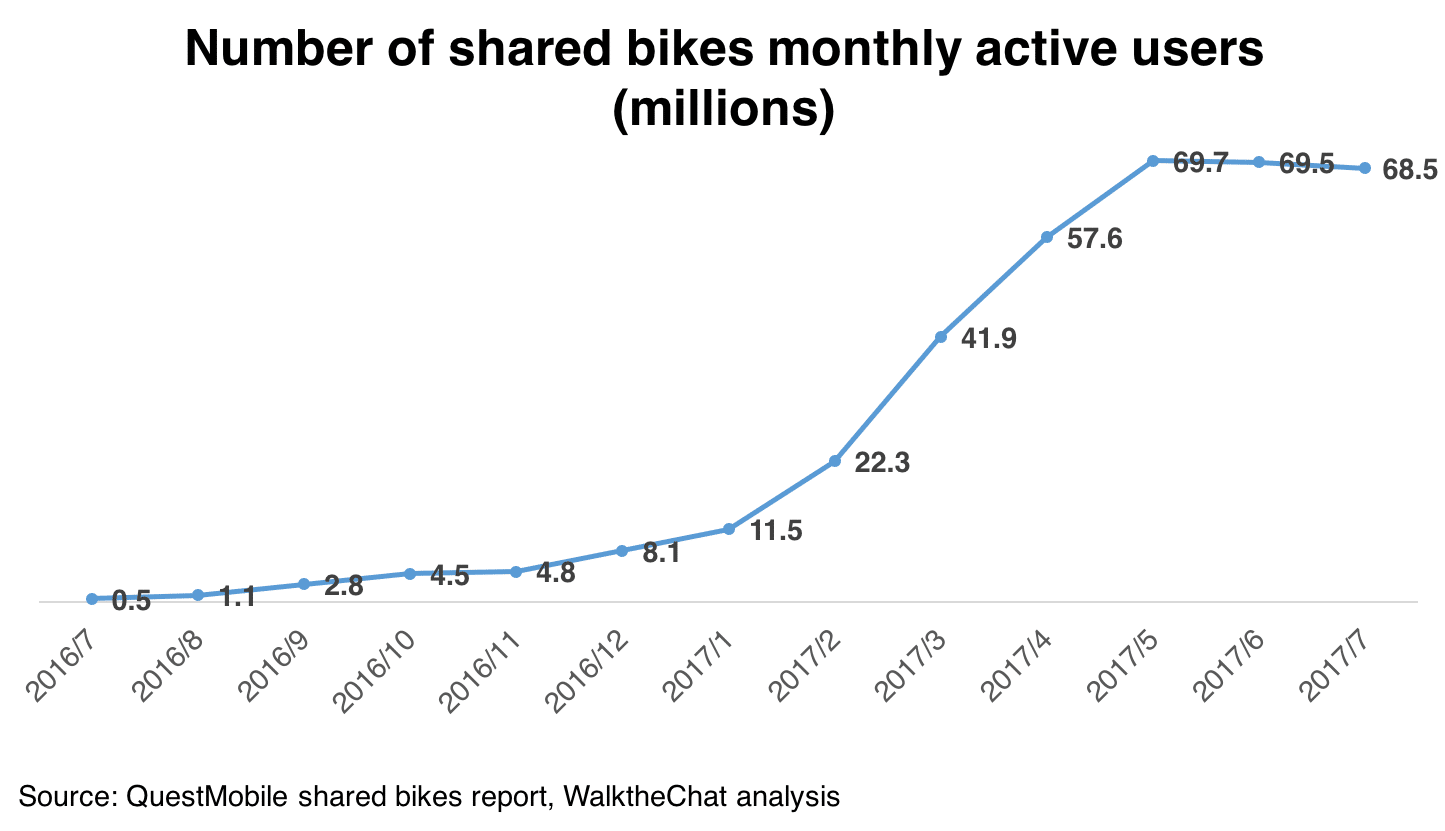
The two big winners of the race are Mobike and Ofo, which gather each around 35 million Monthly Active Users, with about 28% of overlap between the two companies.
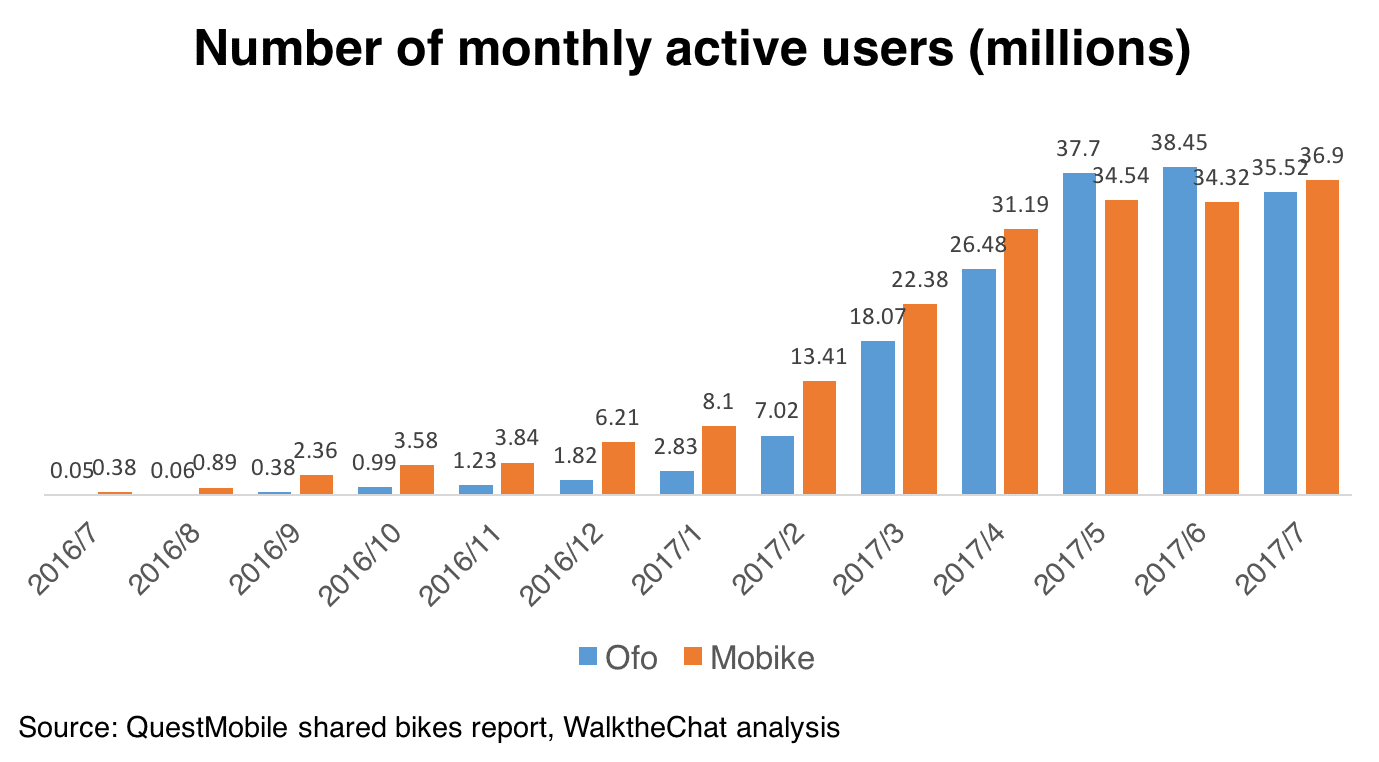

Users habits
Although in the early stage, users were experimenting with many different types of bikes (and enjoying a lot of free rides and coupons), the market is now consolidating.
More than 6 months ago, only 22.9% of users were using only 1 type of bikes. This number went up to 58.6% when asking users what type of bikes they’ve been using over the last month.
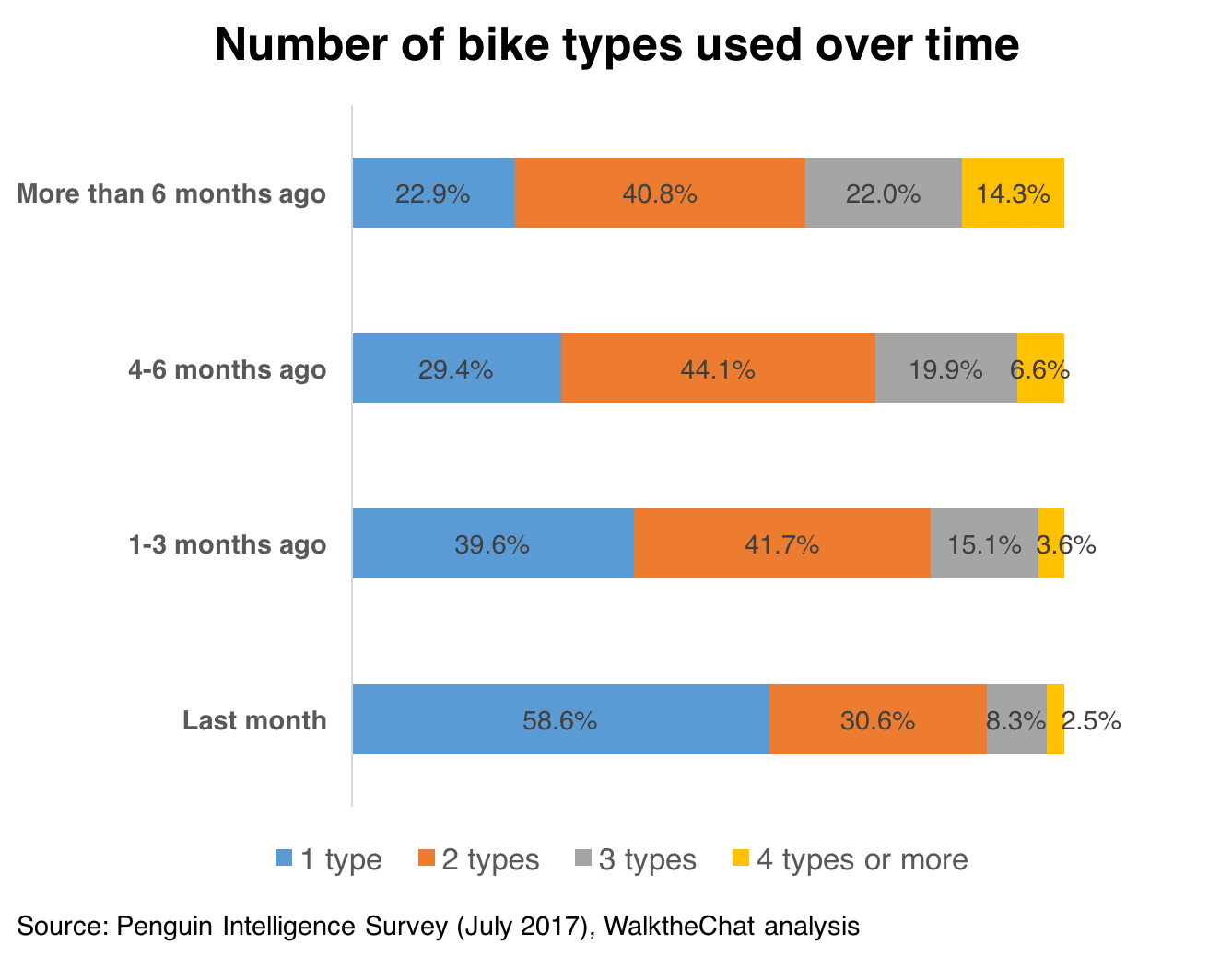
The main reasons for choosing a bike over another are, overwhelmingly (making up for 82.3% of user choices) discounts and the quality of the riding experience.
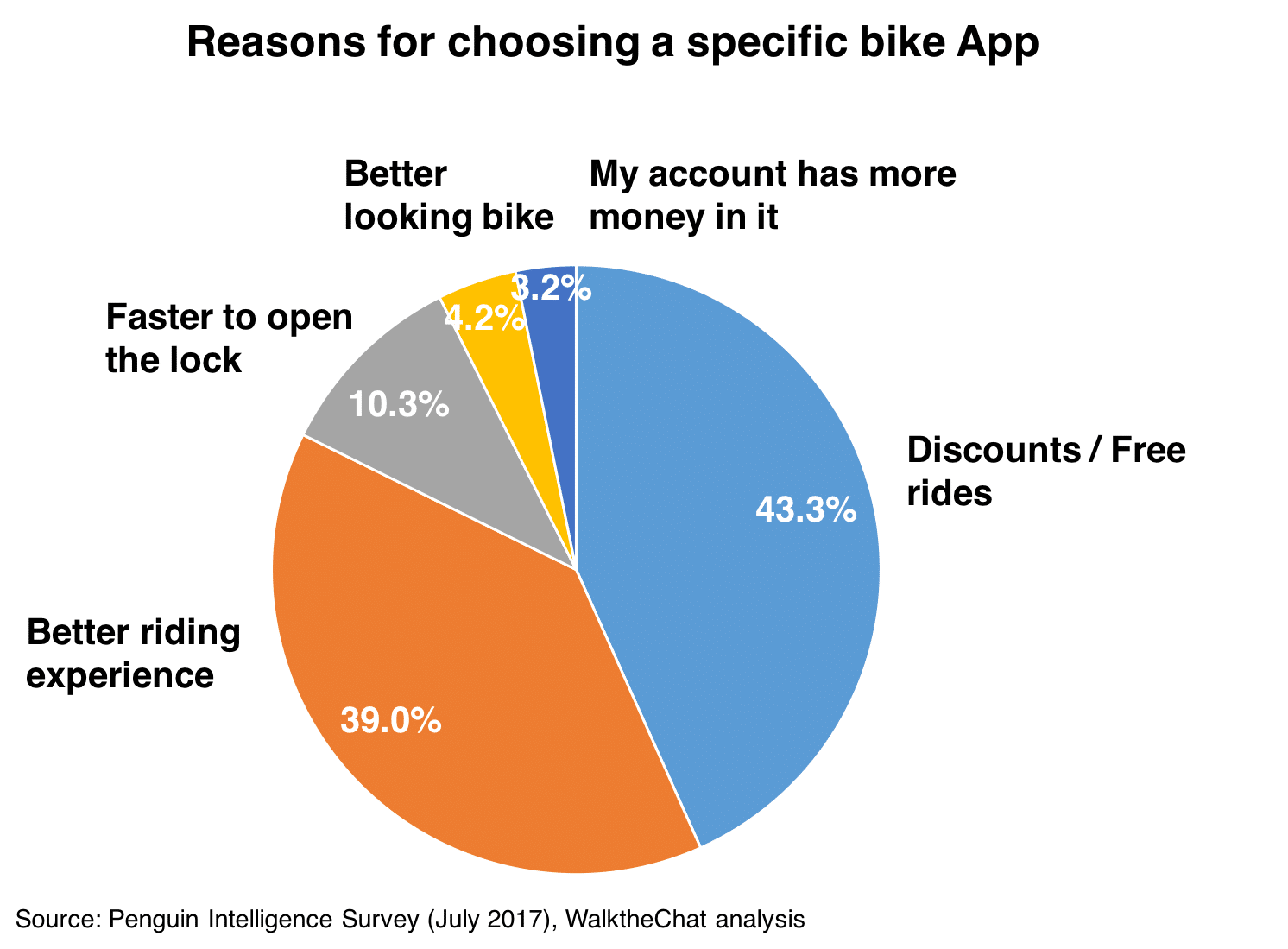
Although the most popular method to unlock bikes remains the native App of the shared bike companies (Ofo, Mobike, etc.), WeChat and Alipay remain strong contenders.
Both tech giants managed to attract users via different incentives.
For WeChat, it is the ease of use, especially with the mini-program integration of Mobike which makes the experience fast and intuitive.
In the case of Alipay, users can obtain Sesame credits (related to the financial services provided in the Alipay wallet) by unlocking shared bikes within the App.
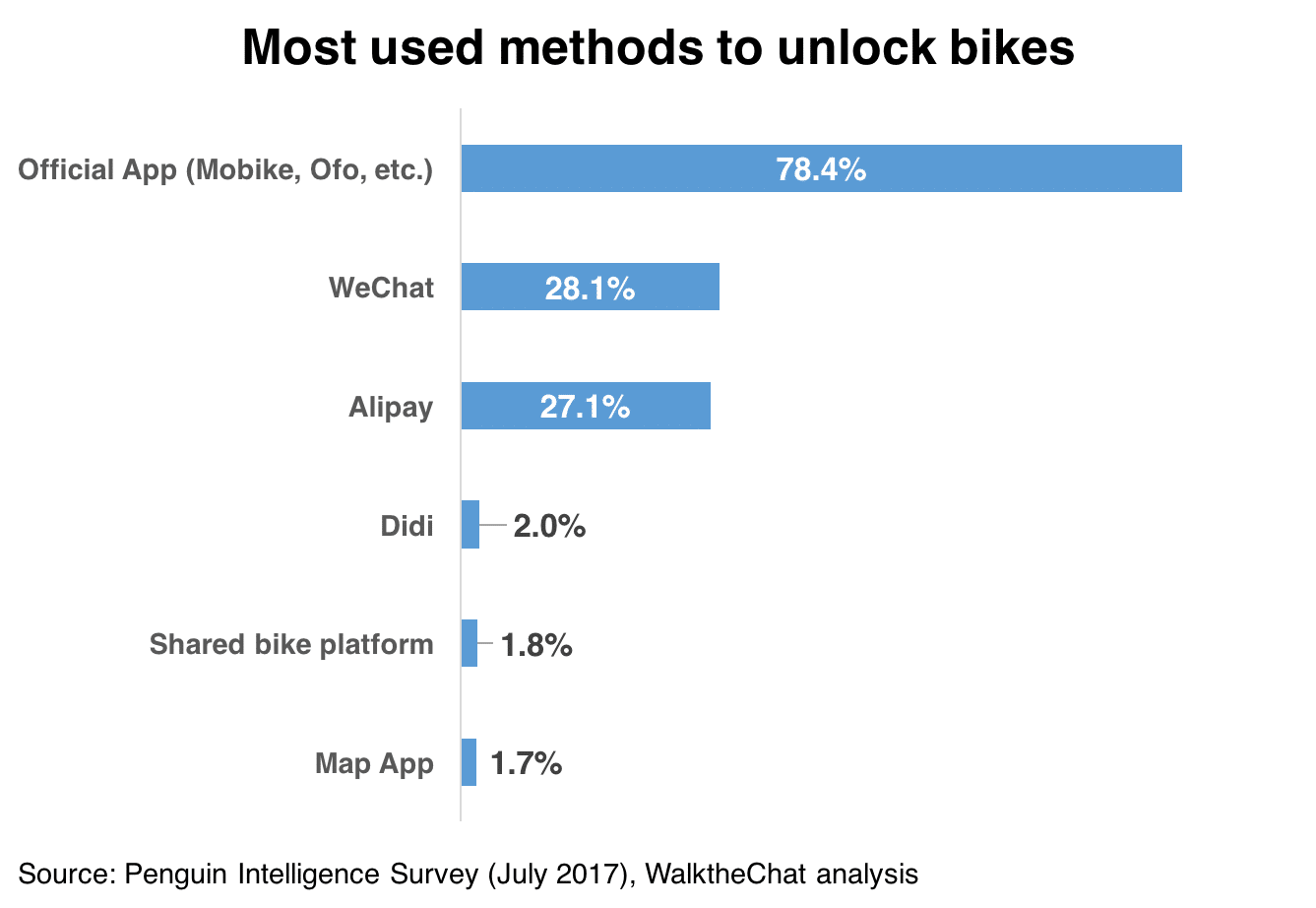
The vast majority of users (56.1%) are mostly using shared bikes on an occasional basis. A significant portion of users (23.5%) is however frequently using shared bikes on weekdays, to go to work or for other daily trips.
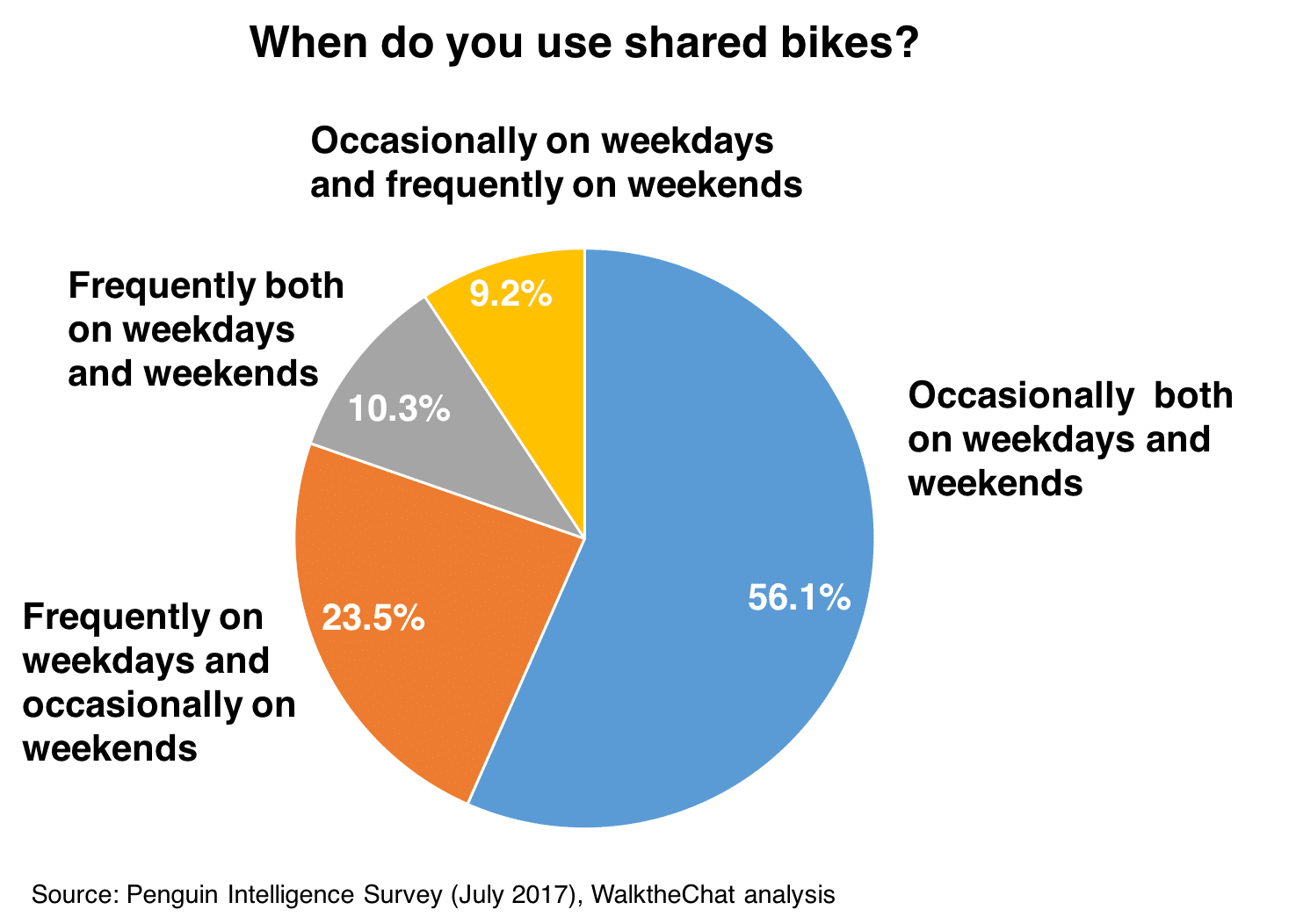
Over 7 months, the distance covered using shared bikes went down, with more than 80% of trips now being of less than 3km.
This evolution can be attributed to the higher concentration of shared bikes in the street, which make them more likely to be used to cover shorter distances.
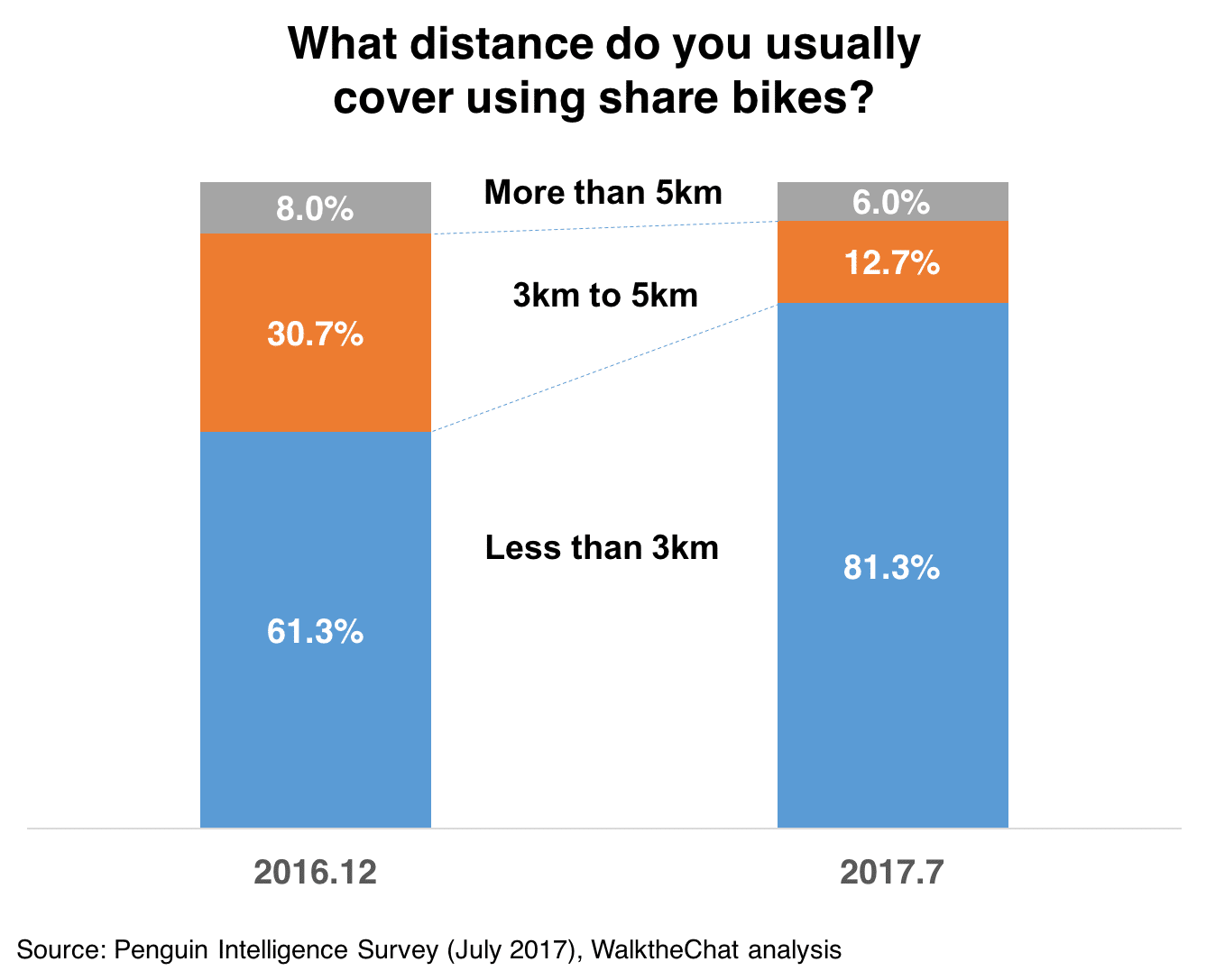
Shared bikes significantly changed users’ habits. More than 56.1% of them state that shared bikes replaced other modes of transportation.
46% of them say they are more likely to make spontaneous trip when they stumble into a bike.

Shared bikes also have significant positive social impact as they replaced very polluting modes of transportation: 55.4% of users mentioned they are less likely to take taxis since shared bikes are around.
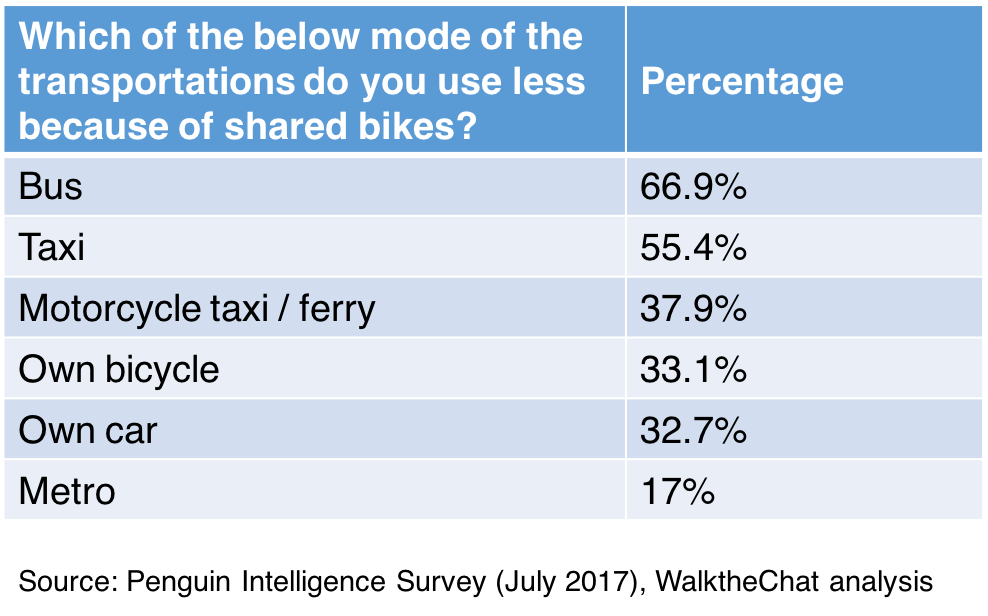
Although it’s worth pointing out lack of recycling process is now putting a huge burden to the environment. Hundreds and thousands of bikes are being placed by local law enforcement in dump fields due to parking violation.
Business prospects for shared bikes
Most users (44.0%) would prefer that shared bike platforms collaborate with offline businesses to offer coupons after rides.
It is worth pointing out that a significant percentage of users (36.%) would also be willing to pay a monthly subscription in order to get unlimited shared bike rides.

Although less and less users are seeing shared bikes as a frequent mode of transportation (going down from 70% to 65.4% in 7 months), the overwhelming majority of users say they will keep using them at least on an occasional basis.
Only 2.1% of past users say they won’t be using shared bikes in the future.
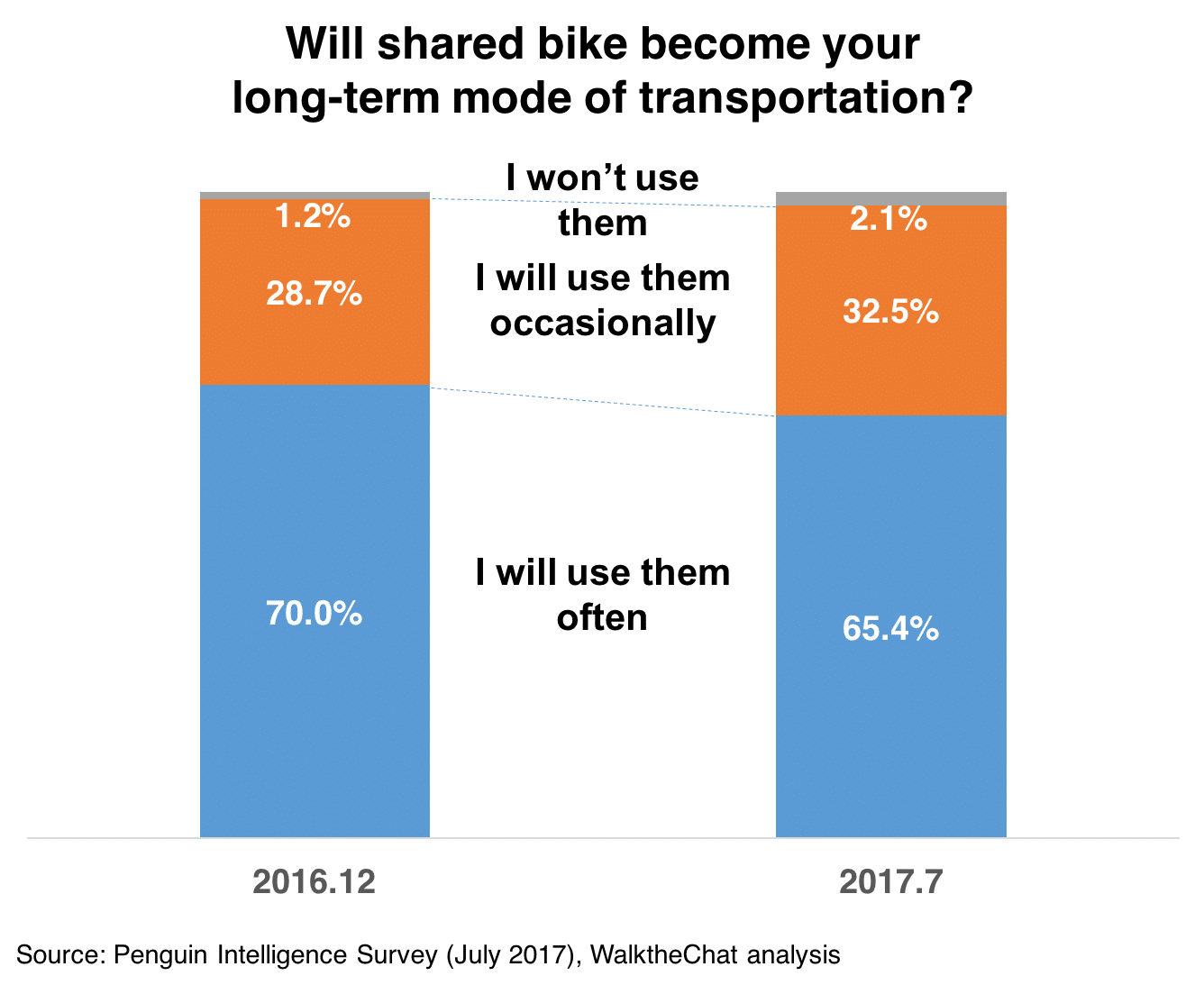
Shared bikes are however still crippled by systemic issues.
Only 8.9% of users said they were perfectly satisfied with the shared bike experience.
51.5% of them complained about the high proportion of broken bikes, while 51.4% of them mentioned the lack of availability of bikes at peak hours, when they’re most needed.
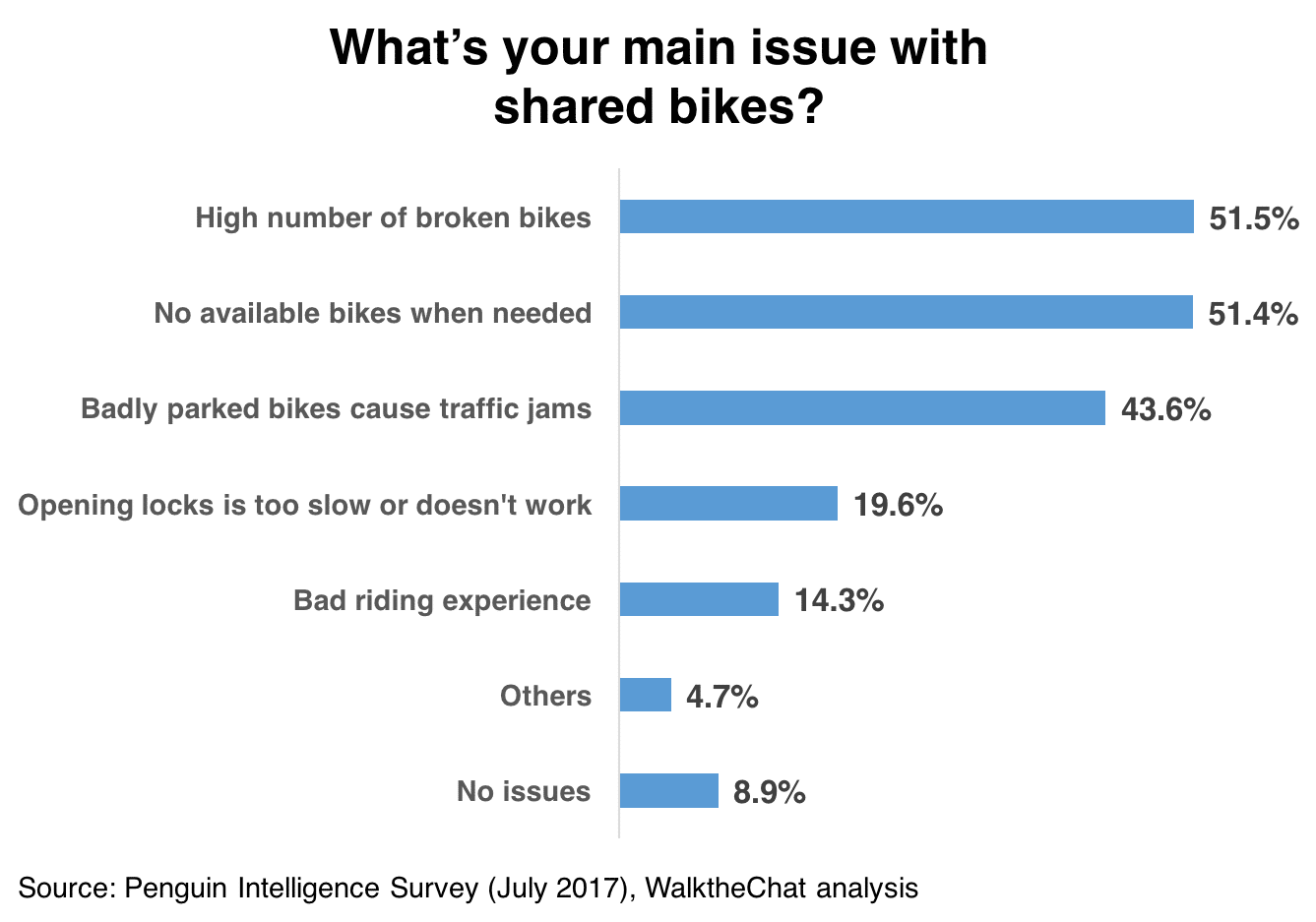
Conclusion
The shared bike craze has been a small revolution in China, gathering more than 70 million monthly active users within a year.
This market is however reaching a plateau, and quickly consolidating around a few companies and more specific usage habits.
Now that the land grab is ending, it is likely that smaller companies will start dying out, and larger players like Ofo and Mobike will have to put a stronger emphasis on long-term profitability.

